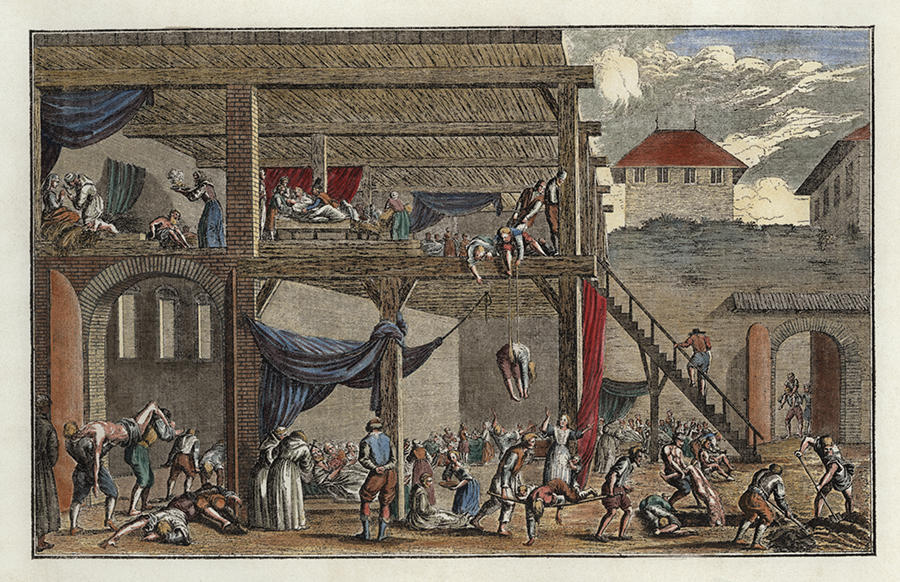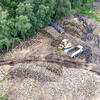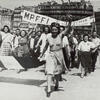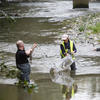You are here
Forgotten dates in Europe’s history (2/4)

(The excerpts below are taken from the book Chroniques de l'Europe , CNRS Éditions, January 2022).
1864 - "Lady students are so respectful"
It was with these words that, a few years after a woman signed up for the first time, the Swiss Faculty of Zurich paid tribute to the dedication of its female students. In 1864, the faculty had admitted Nadezhda Suslova, a Russian national. From a modest background, she had attended classes in St. Petersburg, before Tsar Alexander II banned women from entering universities.
Her case set a precedent in Western Europe: not only was Suslova the first woman officially enrolled in a university, she was also the first, in 1867, to be allowed to take her PhD in medicine, paving the way for other students from Eastern Europe. Sofia Kovalevskaya, also from Russia, became Germany's first female doctor of mathematics in 1874, and in 1890, the Romanian Sarmiza Bilcescu obtained her doctorate in law at the University of Paris. The feminisation of universities was underway at last.
Despite the fact that a handful of women had been able to study after universities were first founded in the Middle Ages, and that, in most European countries, there was no law prohibiting this, customs and morality prevented them from doing so in practice: how could they complete a university curriculum if they did not have access to public secondary education? Wasn't there a risk that studying would jeopardise their femininity? And after all, people wondered, what possible use could these cervelines (“bluestockings”), as they were pejoratively known in France, make of their university diploma?



With no career prospects, their only option would be to “make a good marriage”. The admission of female students also raised the problem of coeducation. To resolve this issue, absurd schemes were thought up, such as the Scottish University of Glasgow's proposal to provide classrooms with partitions and two separate entrances. Some countries chose a more permanent solution by introducing single-sex educational institutions, such as England with its women's colleges.
During this first period, female students enrolled more in science courses, whereas their male counterparts preferred the more prestigious classical humanities. However, obstacles in a number of professional sectors led women to specialise in fields regarded as “feminine”, such as, for medical students, women's and children's diseases. Some of them, however, subsequently went on to enjoy exceptional careers, like Marie Sklodowska-Curie, who left Warsaw (Poland) in 1891 to study physics at the University of Paris.
Many women sought social and economic independence, as well as intellectual emancipation. The belated feminisation of European universities was initially sparked by the unprecedented arrival of female students from Eastern Europe in higher education institutions in Switzerland, France and Germany, and later in Britain and Scandinavia.

At the turn of the 20th century, few universities refused to admit women. Although some Catholic countries, such as those in southern Europe, lagged slightly behind, numbers of females increased everywhere: by 1900, they accounted for some 21% of students in Switzerland, and 16% in England, while by the time of the First World War a third of Norwegian scholars were women. After 1945, the trend accelerated and, by 2016, 54% of all higher education students in the EU were women, as well as the majority of those benefitting from the Erasmus programme.
Isabelle Matamoros, Sorbonne Université / Sirice
August 1882 - Science brings international cooperation to the poles
In the summer of 1882, researchers from twelve countries in Europe and North America set off at the same time for a year of scientific exploration in the Arctic and Antarctic. Rather than seeking sensational geographical discoveries and national prestige, their aim was to work together to better understand these little-known environments, and by extension, the physics of the Earth. This was the first time in history that a scientific operation on this scale had ever been undertaken.



Following a series of conferences organised in Hamburg (Germany) (1879), Bern (Switzerland) (1880) and Saint-Petersburg (Russia) (1881) by a polar commission set up by the International Meteorological Congress, and aided by the untiring work of the Austro-Hungarian naval officer Carl Weyprecht, the governments of Austria-Hungary, Denmark, Finland, France, Germany, the Netherlands, Norway, Russia, Sweden, the United Kingdom, Canada and the United States agreed to raise the funds required to build a total of twelve national research stations in the Arctic and Subarctic, and two in the Subantarctic. Although individual countries had their own strategic and economic interests, especially related to fishing, these were still very limited at the time, thus enabling these nations to work together for progress. They used the same instruments, with the same instructions, to carry out synchronous, hourly observations of the same phenomena. The purpose of making the measurements comparable was to improve knowledge of ocean currents, air and sea temperature, ice melt and the Northern and Southern lights.
Unexpected events, such as the waves recorded by the German and French Antarctic stations following the huge eruption of Krakatoa in Indonesia on 26-27 August, 1883, further contributed to the data collected. Some stations also conducted ethnographic surveys of indigenous populations, such as the Saami in northern Norway and the Yámanas in southern Tierra del Fuego (Argentina).
The joint scientific expedition was expensive, complex and extremely risky. The participants had to endure fierce gales, snowstorms, freezing temperatures and instruments that often had trouble withstanding the conditions. At one point, the Dutch contingent found themselves stranded without a ship, while some of the American team lost their lives on the return journey.

In the end, the outcome was disappointing. A year was too short a time to collect meaningful data, as the scientists knew only too well, but there weren't enough funds to stay any longer. And more seriously perhaps, the researchers lost sight of the international nature of the undertaking and, once back home, reverted to the routine of working and publishing within a narrow national framework.
This first International Polar Year – thus named subsequently – nonetheless enabled scientists to get a grasp of the topography and environment of the polar regions as well as terrestrial magnetism, while standardising terminology and methodologies across cultural traditions and language barriers. In short, it laid the foundations on which future knowledge could be built, in particular through the organisation of three more International Polar Years (1932-1933, 1957-1958 and 2007-2009). Its archives now provide us with valuable material for the analysis of global climate change.
Ulrike Spring, University of Oslo (Norway)
August 1899 - The return of the plague?
In August 1899, Oporto, an Atlantic port in northern Portugal home to 150,000 inhabitants, was cut off by a military cordon sanitaire. A few days earlier, the plague had been officially declared. Lisbon, the capital, hoped to reassure the rest of the kingdom as well as the foreign powers that had suspended their maritime trade.
Panic set in. When the measures were announced, 40,000 people managed to flee according to observers at the time, thus threatening to infect the whole of Europe. Industrialists and merchants accused Lisbon of asphyxiating Oporto for economic and political reasons. Thousands of workers were reduced to unemployment and begging. Rumours cast doubt on the very existence of the disease. There were fears of famine, looting and rioting. By early September, 64 cases and 28 deaths had been recorded.
There had been no plague epidemics in Europe for two centuries, and the continent was far more concerned about worldwide outbreaks of cholera. In the 1890s, however, the plague spread from the Chinese province of Yunnan, before breaking out in Bombay (India). European trade interests were threatened on a global scale, and there was a possibility that the infection would reach Europe.



In 1897, during one of the International Sanitary Conferences that had been held since the mid-19th century, physicians, hygienists and diplomats came together in Venice (Italy). Their aim was to establish international regulations that would protect public health while safeguarding trade. Practical initiatives, such as sanitary inspection and surveillance, disinfection, quarantines, and lazarettos (quarantine hospitals) were discussed, while a health information system to secure the trust essential for the implementation of preventive measures was set up.
The Portuguese authorities were blamed for contravening this spirit of international cooperation. Despite this, scientific collaboration got under way. In early September, an international commission, chaired by Ricardo Jorge, Oporto's Medical Health Officer, brought together leading bacteriologists from Portugal, Norway, Spain, Russia and France. Albert Calmette, director of the Pasteur Institute in Lille (northern France), succeeded in convincing them of the effectiveness of the anti-plague serum developed by his colleagues.
Epidemics tend to stimulate the imagination and the way things are perceived. Oporto's working-class districts with their crowded alleys were likened to the Orient, seen as the birthplace of diseases. According to the French consul, rumours, denial of the plague, and attacks on medical staff were beyond belief: "You wouldn't think you were in Europe." The Europe he was referring to was one of hygiene and progress, embodied by the hope born of bacteriology. One that could control the plague, like Calmette who, meeting journalists on his return to Paris, showed them a tin box on a mantlepiece that contained the Yersinia pestis bacillus.

By the beginning of 1900, the Oporto epidemic had died out. The death toll is subject to doubt, but probably numbered around a thousand fatalities. Despite being a real threat, there were only a few sporadic outbreaks in Europe. The plague continued to spread across the world, eventually reaching the Americas. In 1907, the creation of the International Office of Public Hygiene, followed in 1923 by the Health Organization of the League of Nations, the forerunners of the WHO (1948), show that, already at the time, people were aware of the importance of going beyond the borders of Europe to base cooperation on worldwide solidarity and a global approach to public health.
Céline Paillette, Université Paris 1 Panthéon-Sorbonne / Sirice
Further reading:
Chroniques de l'Europe, coordinated by Sonia Bledniak, Isabelle Matamoros and Fabrice Virgili, CNRS Éditions, January 2022, 272 pages, €20 (available in digital format).
Explore more
Author
Chroniques de l'Europe (in French), coordinated by Sonia Bledniak, Isabelle Matamoros and Fabrice Virgili, CNRS Éditions, January 2022, 272 pages, €20 (available in digital format).



















